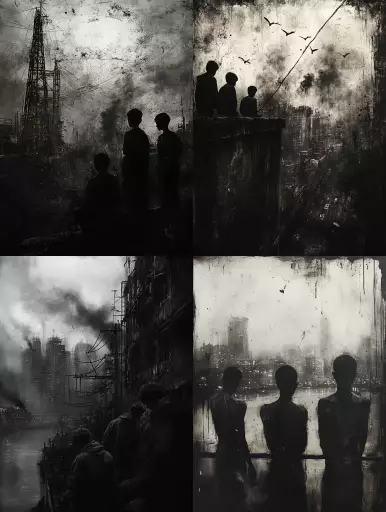Explore the Best AI Image Gallery

Pixels on Your Skin: How AI Image Generation Is Reshaping Design
The realm of design is undergoing a seismic shift, propelled by the advent of artificial intelligence (AI) image generation. Tools like DALL-E 2, Midjourney, and Stable Diffusion are enabling designers to conjure breathtaking visuals with just a few words, blurring the lines between human creativity and machine ingenuity.
This revolutionary technology is impacting various facets of design, from logo creation and marketing materials to website layouts and even architectural blueprints. Lets delve into the exciting possibilities, potential challenges, and ethical considerations that accompany this AI-powered artistic revolution.
Unlocking Creative Potential
AI image generators empower designers with a plethora of tools:
- Rapid Prototyping: Designers can quickly iterate through multiple design concepts, exploring various aesthetics and styles without the time constraints of traditional methods.
- Conceptualization Assistance: Struggling to visualize a complex idea? AI can translate abstract thoughts into tangible images, sparking new creative avenues.
- Customization at Scale: Generate unique variations of an image based on specific parameters, ensuring consistent branding across multiple platforms.
Applications Across Design Disciplines
The versatility of AI image generation extends across diverse design disciplines:
- Graphic Design: Create eye-catching logos, illustrations, and marketing graphics that capture attention and convey brand messages effectively.
- Web Design: Generate unique website backgrounds, banners, and interface elements to enhance user experience and create a visually compelling online presence.
- Fashion Design: Conceptualize new clothing designs, experiment with patterns and textures, and visualize collections before committing to physical prototypes.
- Architecture & Interior Design: Visualize building layouts, explore different materials and finishes, and create immersive 3D renderings of proposed spaces.
Ethical Considerations
While AI image generation offers immense potential, it also raises ethical concerns that require careful consideration:
- Copyright & Ownership: Who owns the copyright to images generated by AI? Determining authorship and intellectual property rights is crucial in this evolving landscape.
- Bias & Representation: AI models are trained on massive datasets, which can inadvertently perpetuate existing biases and stereotypes. Ensuring fairness and inclusivity in AI-generated content is paramount.
- Job Displacement: Will AI replace human designers? While automation may streamline certain tasks, the human element of creativity, empathy, and critical thinking remains irreplaceable.
The Future of Design: A Collaborative Evolution
The future of design lies in a harmonious collaboration between human creativity and AI technology. Rather than viewing AI as a replacement for designers, it should be seen as a powerful tool that augments human capabilities.
By embracing ethical guidelines, fostering transparency, and continuously refining AI algorithms, we can harness the transformative power of AI image generation to unlock new levels of creative expression and innovation in the design world.
As technology advances, we can expect even more sophisticated AI tools that enable designers to create hyper-realistic visuals, interactive experiences, and personalized designs tailored to individual preferences. The journey has just begun, and the possibilities are truly limitless.